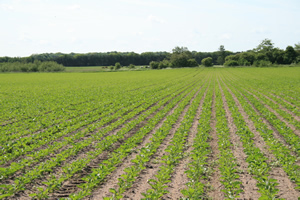
Foliar diseases in sugar beet could be more of a problem this year, as so many new varieties have low disease ratings. At a time when sugar beet growers are looking to increase their yields in order to counteract the reduction in price, planned disease control should become an essential part of an effective management strategy, says Dow AgroSciences.
"Looking at the new variety list this year, there are six new varieties, all of which yield very well but all but one have low or very low resistance ratings for powdery mildew. Trinita is the highest yielding variety on the new list with an adjusted yield of 104.5% but has a woeful 2 rating against mildew, meaning that it is very susceptible to this disease. Alota, the next highest yielding variety at 103.7%, has just a 3 rating for mildew and Pondus, the third highest yielding variety, has a 4 rating. Another new variety Bullfinch which is Rhizomania- resistant also has a 4 against mildew," points out Liz Tomkinson, Fungicide Specialist for Dow AgroSciences.
"If you are growing a variety that is high yielding but disease-prone, additional attention to disease control and more intensive fungicide usage will be needed. This year with the warm conditions we have been experiencing, it is likely that mildew will be a problem anyway, but with the plethora of susceptible varieties being grown, it makes sense to plan out a strong protectant and cost-effective programme right from the start," says Liz.
Liz reports that sugar beet varieties that have a rating of just 2 for powdery mildew include Mars, Opta, Palace and Trinita. "Those with a 3 disease rating include Alota, Bandit, Harry, Miriam and Zanzibar. Those with a 4 rating include Bobcat, Bullfinch, Justina, Kingston and Pondus. The use of the strong protectant fungicide Fortress against powdery mildew, which is responsible for significant yield loss, will be worthwhile in all these varieties."
"If the warm, dry weather continues this spring, then powdery mildew is likely to arrive earlier in East Anglia. Growers should be out looking for disease and be prepared to apply Fortress at first signs of disease," says Mrs. Tomkinson.
Fortress contains 500 g/litre quinoxyfen, formulated as a suspension concentrate. It is a systemic protectant fungicide giving protection against powdery mildew on new plant growth. It is recommended on all varieties of sugar beet, wheat, barley, rye, triticale, durum wheat and winter and spring oats. In sugar beet Fortress should be applied at a 0.3 l/ha in 200-4000 litres of water at first signs of disease, usually in July up until any time up to 28 days before harvest. It is rainfast in one hour and is packed in a 1 litre container.
